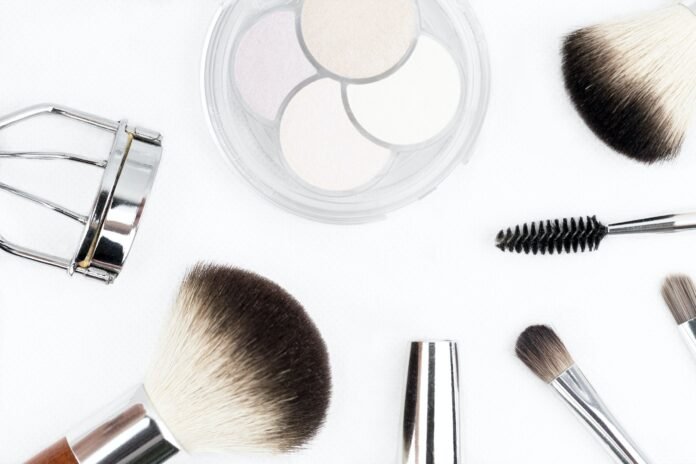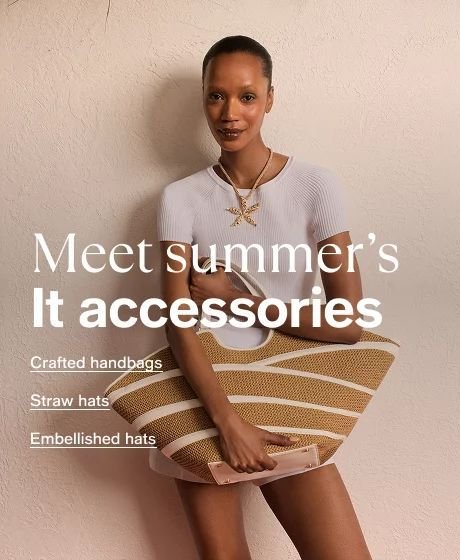Our world is a visual one. Everywhere we turn, we are bombarded with a plethora of logos, from the clothes we wear to the products we buy. But have you ever stopped to think about the power of these seemingly innocuous images? The logos decorating our fashion choices are often more than mere decoration – they can tell a story and provide a powerful means of communication. Look closely, and you’ll discover there is much more to these iconic symbols than initially meets the eye. In this article, we uncover the secrets of “The Power of Logos: Understanding Brand Symbolism in Fashion”.
1. Brand Recognition: Analyzing the Significance of Logos in Fashion
Logos have become an emblem of recognition in the fashion industry, linking consumers to a brand’s identity and values. A logo allows a designer’s vision to be seen and owned by the consumer, creating an emotional bond that is specific to the brand.
Small, yet meaningful, logos can be seen throughout fashion – old and new. Logos create a mark of distinction that carries with it a sense of exclusive. An iconic logo can convey the designer’s point of view without having to say it aloud and often bring about positive perceptions in the minds of the consumer.
The shape, size, and colors are just some of the elements that contribute to a logo’s success:
- Shape – Geometrical shapes, such as a triangle, circle, or square, convey a feeling of balance and perfection.
- Size – A logo should have the right size that is neither too small nor too big, ensuring that it stands out in an aesthetically pleasing way.
- Colors – Color plays a huge part in getting the message across in a logo. Choosing the right shade and hue can evoke feelings of happiness, anger or sentimentality.
A brand’s logo should feel timeless and stylistic, thus creating a lasting impression on customers. Logos help form a lasting connection between the product and the consumer, ultimately playing a key role in brand recognition and loyalty.
Designers put much thought into the logos that carry their brand forward, making sure that they evoke the vision they have for the brand. Quality logos can help brands be seen and recognised, making them stand out in a highly competitive field.
2. The Visual Impact of Symbols in the Fashion Industry
The fashion industry is full of symbols intended to tell consumers something about the products sold. From brand names to logos, symbols can be seen everywhere from logos to fabrics, and brand names to slogans. These symbols can be used as powerful visual representations of a company’s values, or simply to stand out from the competition.
Symbols in the fashion industry have a powerful influence on consumer choice. A few of the most influential symbols include logos, patterns, colors, and signs. Logos are perhaps the most important symbol for a fashion brand. They can be quite elaborate or very simple, but they both achieve the same goal – to make a statement and present a brand’s identity. Patterns and colors are also very prominent in the fashion industry, and can help create a recognizable look for a brand or a particular product. Finally, signs and other symbols are often used in fashion advertising, as a means of expressing ideas like luxury, status, and fun.
goes beyond just increasing brand recognition. It also offers a great way to tell a story behind the items. For example, a clothing line could include visuals that tell a story about how the items were made, or how they represent a particular cause. By creating meaningful visuals, fashion brands create a level of personal connection with their customers that traditional marketing can’t come close to achieving.
The combination of colors, patterns, logos, and other symbols in fashion allows brands to create a unique and lasting impression in consumers. Utilizing powerful visuals can set your products apart in the minds of customers and create an emotional connection. A powerful combination of symbols can also be used to express brand values and show that the brand is focused on quality, style, and innovation.
- Logos are perhaps the most important symbol in the fashion industry
- Colors and patterns help create a recognizable look for a product or brand
- Visuals can be used to tell a story about a product and create an emotional connection
- Combinations of symbols can be used to express a brand’s values and its focus on quality and innovation
3. Unlocking the Power of Logos: How Fashion Designers Use Symbols to Connect with Consumers
Today, fashion designers are connecting with customers in deeper ways than ever before, unlocking the power of logos to create meaningful and lasting relationships. From the iconic Chanel double-C to the Supreme box logo, there are many examples of how logos have become a powerful symbol that resonates with consumers. Here are a few ways fashion designers are utilizing the power of logos in the clothing industry to connect with their customers.
- Identity & Brand Recognition: Logo designs are particularly effective in connecting customers to a certain brand, as they allow fashion designers to easily showcase an identity while simultaneously leveling up the recognition of the label. Logo designs are used to describe a company’s mission, values and unique selling points.
- Consistent Look: Logos are a great way to showcase a cohesive image. Repeating logo designs across multiple pieces of clothing creates an instantly recognizable look for a label, become synonymous with a certain look and feel.
- Connection to History: Logos have been reused by fashion designers over the years, allowing fresh updates to their iconic symbols. Reused logos create an instant understanding for customers, as they become a symbol of classic styles and evocative flares of the past.
Logos are often associated with a country or culture, allowing fashion designers to represent a certain part of the world to their customers. For example, Japanese fashion designers often use traditional logos, prints and patterns to showcase the culture of their homeland and “bring a piece of Japan” to the rest of the world. Choosing to showcase a symbol of their homeland reflects a feeling of national pride and allows the fashion label to stand out amongst the competition.
In addition, fashion designers are increasingly utilizing logos and graphics to create awareness and engage with customers online. From engaging campaigns to witty slogans, graphic designs are an effective way to connect with customers and grab their attention. With simple and clever designs, fashion designers can showcase their unique and creative ideas to the world.
Fashion labels are increasingly turning to logos to create special relationships with customers, from engaging campaigns to iconic emblems. Logos may be small, but they are incredibly effective in creating meaningful relationships, allowing fashion designers to leave a unique and lasting impression on the hearts of those that admire their labels.
4. The Evolution of Logo Design: From Classic Monograms to Bold Logotypes
When the concept of logos was first introduced, designers were mainly concerned with making them recognizable and creating brand continuity. For centuries, designers used symbolic monograms and clean sans-serif typefaces, establishing logos as indispensable symbols of businesses, governments, and products.
Today, however, logos have evolved dramatically. The modern landscape of logo design – sometimes referred to as identity design – consists of a wide array of styles, from minimalist design to complex, bold typefaces. There’s something for every brand, from the classic and timeless to the modern and dynamic. Here’s a closer look at four distinct styles of digital logo design:
- Classic monograms: Monograms are typically created by the combination of two or more letters in a particular typeface, often with decorative elements. They are easy to remember and often inspire a feeling of timelessness and tradition.
- Simple lettermarks: Lettermarks are similar to monograms, but rather than combining two or more letters into a single design, they use one letter as a focal point. These type of logos often feature sans-serif typefaces and tend to be straightforward, modern, and bold.
- Modern wordmarks: Wordmarks are type of logos that use a text-based graphic to create a focal point for a brand. This style of logo is becoming increasingly popular in today’s digital age, and can be easily adapted to various contexts and environments.
- Bold logotypes: Logotypes are logos that are composed entirely of type. Unlike wordmarks, logotypes often feature unique, stylized typefaces, creating a greater distinction between the logo and the brand. Logotypes get noticed and they are the perfect choice for iconic, memorable logos.
No matter what the brand – whether classic or modern – there’s a logo style to suit it. As logo design evolves, so too does the world of brand identity design. With so many available options, businesses have an incredible opportunity to create a logo that is truly unique and impactful.
5. Making a Statement: How Consumers Interact with Fashion Logos
Presentation is Everything
In a world of multitudes of fashion brands with symbols and logos that look almost exactly the same, standing out from the crowd to create an unforgettable statement is essential for success. When it comes to fashion logos, it is all in the details; the way colors are used, the type of font and font size, the message behind the logo and how it speaks to it’s target audience. The most successful fashion logos are those that make a statement and stay entrenched in the public consciousness.
The presence of fashion logos is inescapable. Whether on clothing, accessories, or even shoes, fashion logos are more than just an aesthetic principle, they are a powerful symbol that has the potential to drive both engagement and emotion. In the age of powerful social media platforms, one of the significant ways fashion logos can capture a consumer’s interest is through striking visual appeal and a profound message. It’s about more than just looking the part; it’s about speaking to an audience, establishing a brand identity and making a statement.
- Striking visual appeal
- Fostering consumer engagement
- Establishing a brand identity
- Making a statement
Most fashion logos are linked to a lifestyle, a sense of style and how people choose to present themselves. A successful fashion logo communicates that lifestyle with emotion and visual power. It should evoke a feeling of nostalgia or aspiration for its target demographic, encourage loyalty for its customers, and have a lasting impression in the consumer’s mind. Most importantly, the logo must be memorable and provoke an emotional response from a consumer. A logo that captures the imagination of the audience will never disappear – the best fashion logos become timeless.
For any fashion business, creating an eye-catching logo that stands out in the crowd is a critical component for maximizing potential. For many consumers, fashion logos identify a person’s values and create a connection with the product. From a sustainable firm, to a streetwear label, or a luxe designer fashion house, logos are the first stop for customers in their journey with fashion.
No matter your thought process behind choosing your favorite fashion brand, the power of fashion logos should not go unnoticed. Logos are a key element of fashion, and provide so much more than simply decorative value. So the next time you are looking for a piece of clothing to add to your wardrobe, be sure to remember the strength and symbolism of the logo that is on it. With understanding of the power of logos, it’s possible to be stylistically smarter.




